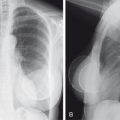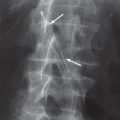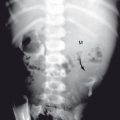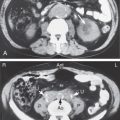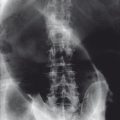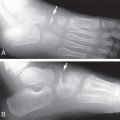Skull and Brain
The appropriate initial imaging studies for various clinical problems are shown in Table 2.1 .
| Suspected Cranial Problem | Initial Imaging Study |
|---|---|
| Skull fracture | CT scan including bone windows |
| Major head trauma a | CT (neurologically unstable); MRI (neurologically stable) |
| Mild head trauma a | Observe; CT (if persistent headache) |
| Acute hemorrhage | Noncontrast CT |
| Intracerebral aneurysm or arteriovenous malformation | MRI |
| Aneurysm (chronic history) | MR angiogram or CT angiogram |
| Hydrocephalus | Noncontrast CT |
| Transient ischemic attack | Noncontrast CT, MRI if vertebrobasilar findings; consider carotid ultrasonography if bruit present |
| Acute transient or persistent CNS symptoms or findings | See Box 2.4 |
| Acute stroke | |
| Suspected hemorrhagic | Noncontrast CT |
| Suspected nonhemorrhagic | MRI |
| Ataxia (acute or chronic unexplained) | MRI with and without contrast |
| Cranial neuropathy | MRI with and without contrast |
| Multiple sclerosis | MRI of the brain |
| Tumor or metastasis | MRI |
| Carotid/vertebral dissection (ipsilateral Horner syndrome or unilateral headache) | CT angiogram of head and neck |
| Abscess | Contrast CT or MRI |
| Preoperative for cranial surgery | Contrast angiography |
| Meningitis | Lumbar tap; CT only to exclude complications |
| Seizure | |
| New onset or poor therapeutic response | MRI |
| New onset posttraumatic | CT or MRI Imaging not indicated |
| Febrile or alcohol withdrawal without neurologic deficit | |
| Focal neurologic deficit | MRI with and without contrast or CT without contrast |
| Vertigo | |
| If suspect acoustic neuroma or posterior fossa tumor | MRI of internal auditory canal with and without contrast |
| Episodic vertigo (peripheral) with hearing loss or other neurologic abnormalities or persistent vertigo (central) | MRI of head and internal auditory canal with and without contrast |
| Hearing loss | |
| Sensorineural | MRI of head and internal auditory canals |
| Conductive | CT of petrous ridges |
| Mixed sensorineural and conductive, congenital, total deafness, or cochlear implant candidate | MRI of head and internal auditory canal; CT of petrous ridges |
| Vision loss | |
| Adult sudden, or with proptosis, uveitis, scleritis, or ophthalmoplegia | MRI of head and orbits with and without contrast |
| Head injury | CT or MRI of head without contrast |
| Child acute or progressive, proptosis, or orbital asymmetry | MRI of head and orbits |
| Ophthalmoplegia | MRI with and without contrast |
| Headache | See Box 2.2 |
| Dementia | Nothing or MRI (see text) |
| Alzheimer disease | MRI or nuclear medicine FDG PET/CT scan |
| Unexplained confusion or altered level of consciousness | MRI or CT without contrast |
| Neuroendocrine (e.g., hyperthyroidism [high TSH], Cushing [high ACTH], hyperprolactinemia, acromegaly, precocious puberty, etc.) | MRI with and without contrast |
| Sinusitis | See Box 2.3 |
a See text for description of low, moderate, and high risk after head trauma.
Normal Skull and Variants
Normal anatomy of the skull is shown in Fig. 2.1 . The most common differential problem on plain skull x-rays is distinguishing cranial sutures from vascular grooves and fractures. The main sutures are coronal, sagittal, and lambdoid. A suture also runs in a rainbow shape over the ear. In the adult, sutures are symmetric and very wiggly and have sclerotic (very white) edges. Vascular grooves are usually seen on the lateral view and extend posteriorly and superiorly from just in front of the ear. They do not have sclerotic edges and are not perfectly straight.


A few common variants are seen on skull x-rays. Hyperostosis frontalis interna is a benign condition of females in which sclerosis, or increased density, is seen in the frontal region and spares the midline ( Fig. 2.2 ). Large, asymmetric, or amorphous focal intracranial calcifications should always raise the suspicion of a benign or malignant neoplasm. Occasionally, areas of lucency (dark areas) are found where the bone is thinned. The most common normal variants that cause this are vascular lakes or biparietal foramen. Asymmetrically round or ill-defined holes should raise the suspicion of metastatic disease ( Fig. 2.3 ).


Paget disease can affect the bone of the skull. In the early stages, very large lytic, or destroyed, areas may be seen. In later stages, increased density (sclerosis) and marked overgrowth of the bone, causing a cotton wool appearance of the skull, may be seen ( Fig. 2.4 ). Always be aware that both prostate and breast cancer can cause multiple dense metastases in the skull and that both diseases are more common than Paget disease.

Brain
Normal Anatomy
Box 2.1 gives a methodology to follow or checklist of items to use when examining a computed tomography (CT) scan. Both CT and magnetic resonance imaging (MRI) are capable of displaying anatomic slices in a number of different planes. The identical anatomy of the brain can appear quite different on CT and magnetic resonance (MR) images ( Fig. 2.5 ). The normal anatomy of the brain on CT and MR images is shown in Figs. 2.6 and 2.7 . You should be able to identify some anatomy on these images. There are many very complex imaging sequences used during MRI, depending upon the clinical question or suspected pathology. You are not expected to be familiar with all of these, but you should realize that success in making a diagnosis depends on your indicating the clinical problem accurately so that the radiologist can prescribe the correct imaging sequences.
Look for the following:
- •
Focally decreased density (darker than normal) due to stroke, edema, tumor, surgery, or radiation
- •
Increased focal density (whiter than normal) on a noncontrast scan
- •
In ventricles (hemorrhage)
- •
In parenchyma (hemorrhage, calcium, or metal)
- •
In dural, subdural, or subarachnoid spaces (hemorrhage)
- •
- •
Increased focal density on a contrast scan
- •
All items above
- •
Tumor
- •
Stroke
- •
Abscess or cerebritis
- •
Aneurysm or arteriovenous malformation
- •
- •
Asymmetric gyral pattern
- •
Mass or edema (causing effacement of sulci)
- •
Atrophy (seen as very prominent sulci)
- •
- •
Midline shift
- •
Ventricular size and position (look at all ventricles)
- •
Sella for masses or erosion
- •
Sinuses for fluid or masses
- •
Soft tissue swelling over skull
- •
Bone windows for possible fracture





Intracranial Calcifications
Intracranial calcifications can be seen occasionally on a skull x-ray, but they are seen much more often on CT. Intracranial calcifications may be due to many causes. Normal pineal and ependymal calcifications may occur. Scattered calcifications can occur from toxoplasmosis, cysticercosis, tuberous sclerosis ( Fig. 2.8 ), or granulomatous disease. Unilateral calcifications are very worrisome because they can occur in arteriovenous malformations, gliomas, and meningiomas.

Headache
Headaches are among the most common of human ailments. They can be due to a myriad of causes and should be characterized by location, duration, type of pain, provoking factors, and age and sex of the patient. In the primary care population, less than 0.5% of acute headaches are the result of serious intracranial pathology. Simple headaches, tension headaches, migraine headaches, and cluster headaches do not warrant imaging studies. A good physical examination is essential, including evaluation of blood pressure, urine, eyes (for papilledema), temporal arteries, sinuses, ears, neurologic system, and neck. In a patient with a febrile illness, headache, and stiff neck, a lumbar puncture should be performed. In only a few circumstances is imaging indicated ( Box 2.2 ).
a For most of the above indications, CT is acceptable if MRI is not feasible or available. MRI is usually not indicated for sinus headaches or chronic headaches with no new features. See Box 2.3 for CT indications in sinus disease.
CT without contrast is indicated for the following:
Sudden onset of the “worst headache of one’s life” (thunderclap headache)
Posttraumatic headache
MRI is indicated for the following:
A headache that:
Worsens with exertion, cough, or sexual activity
Is associated with a decrease in alertness
Is positionally related and of skull base, periorbital, orbital, or trigeminal autonomic origin
Awakens one from sleep
Changes in pattern over time
A new headache:
In an HIV-positive individual or cancer patient
Associated with papilledema
Associated with focal neurologic deficit
Associated with mental status changes
In a patient > 60 years of age, with sedimentation rate > 55 mm/h and temporal tenderness
In a pregnant patient
A chronic headache with new features or neurologic deficit
Suspected meningitis or encephalitis
CTA or MRA of the head and neck is indicated for the following:
Sudden onset of unilateral headache
Suspected carotid or vertebral dissection or ipsilateral Horner syndrome
CT, Computed tomography; CTA , computed tomography angiogram; HIV, human immunodeficiency virus; MRA , magnetic resonance angiogram; MRI, magnetic resonance imaging.
In general, imaging is indicated when a headache is accompanied by neurologic findings, syncope, confusion, seizure, and mental status changes or after major trauma. Sudden onset of the “worst headache of one’s life” (thunderclap headache) should raise the question of subarachnoid hemorrhage. Sudden onset of a unilateral headache with a suspected carotid or vertebral dissection or ipsilateral Horner syndrome should prompt a CT or MR angiogram.
Sinus headaches can usually be differentiated from other causes because they worsen when the patient is leaning forward or when pressure is applied over the affected sinus. Indications for CT use in sinus headaches are presented in Box 2.3 .
CT scanning is indicated in acute complicated sinusitis if the patient has the following:
- •
Sinus pain/discharge and
- •
Fever
and
- •
A complicating factor such as the following:
- •
Mental status change
- •
Facial or orbital cellulitis
- •
Meningitis by lumbar puncture
- •
Focal neurologic findings
- •
Intractable pain after 48 hours of intravenous antibiotic therapy
- •
Immunocompromised host
- •
Sinonasal polyposis
- •
Possible surgical candidate
- •
Three or more episodes of acute sinusitis within 1 year in which the patient has signs of infection
- •
CT scanning is indicated in chronic sinusitis if the following occurs:
- •
No improvement is seen after 4 weeks of antibiotic therapy based on culture
or
- •
No improvement is seen after 4 weeks of intranasal steroid spray
- •
CT or MRI scanning is indicated in cases of suspected sinus malignancy
MRI scanning with and without contrast is indicated in patients with suspected intracranial complications of sinusitis
CT , Computed tomography; MRI , magnetic resonance imaging.
For sinus imaging in children, see Chapter 9.
Hearing Loss
Hearing loss is characterized as conductive, sensorineural, or mixed. Conductive loss results from pathology of the external or middle ear that prevents sound from reaching the inner ear. Sensorineural loss results from abnormalities of the inner ear, including the cochlea or auditory nerve. CT is the best technique for evaluating conductive loss and the bony structures of the middle ear. Not all patients with conductive loss need a CT scan. Indications include complications of otomastoiditis, preoperative and postoperative evaluation of prosthetic devices, cholesteatoma, and posttraumatic hearing loss. Sensorineural hearing loss may be sudden, fluctuating, or progressive and may also be associated with vertigo. It can be due to viral infection, eardrum rupture, acoustic neuroma, or vascular occlusive disease. Evaluation is best done by MRI, with and without intravenous contrast.
Head Trauma
On skull x-rays, fractures are dark lines that have very sharp edges and tend to be very straight ( Fig. 2.9 ). If a fracture is present over the middle meningeal area, an associated epidural hematoma may be found. If a depressed fracture is present, the lucent fracture lines can be stellate or semicircular ( Fig. 2.10 ). In either of these cases, substantial brain injury may be present and a CT scan, including bone windows, is indicated.


